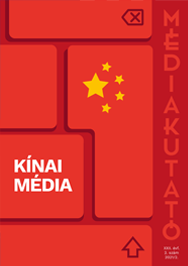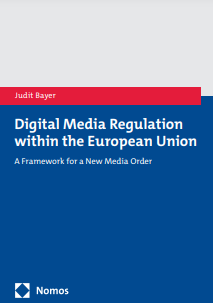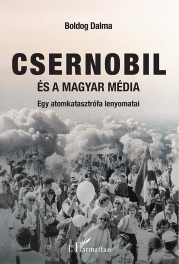Contents – Summer 2021
Révész, Ágota:
Révész, Ágota:
The framing of Coronavirus in Chinese domestic media – and what it reveals about China’s visions of a new world order
Domestic mainstream media in China (and also media exchanges with China) seem to be stuck in the frames of conflict and morality, supported by a focus on responsibility. Both China’s “moral superiority” and the idea of China being “responsible” appear most often in the explicit context of US vs. China rivalry. This serves as a background for China’s visions for the future. Here we find the combination of two traditions, that of ancient China and that of communist China: the concept of tianxia on the one hand, and a communist utopia on the other, complementing and supporting each other. While both of these imagined worlds are structurally open, they do have a political-intellectual-administrative centre, and China sees itself in this role in the new world order. This paper looks into the frames constructed by the official Chinese news media about China’s role in the context of a global challenge. Most case studies explore reactions by Chinese mainstream media to instances of Western (mostly US) communication (including the coverage of political statements), and analyse how Chinese authors interpret these for domestic audiences. It works with Chinese texts, a selection of comprehensive articles from online newspapers with the biggest reach and within a time span of ten weeks (February to mid-April 2020). An analysis of the framing of Coronavirus and China as its country of origin offers an insight into the perceptions of China’s role in the new world order. Its main focus is on how perceptions of global space and power relations changed during the initial phase of the Coronavirus pandemic.
Keywords: Chinese media, Coronavirus-pandemic, framing, geopolitics
Médiakutató Summer 2021 pp. 7-25
Gálik, Mihály:
Gálik, Mihály:
In a hole: An essay on the news media
Dynamic growth in news media industries combined with overall structural changes within them has been a highly important research field in communication sciences for a long time. Between the late 19th and the early 20th centuries, newspaper publishing turned into a large-scale industry. Later on, newsreels in film production, regular news programming in radio and television broadcasting gradually broadened the scope of news media during the 20th century, and finally, in the 1990s online news services entered the scene. In a couple of years after the millennium, social news sites and search engines joined online news services in digital networked media and began to undermine the robust building of legacy news media. Is this process an example for the creative destruction of innovations or something else doing more harm than giving benefit? Well, the answer to this question is largely a function of one’s approach.
Keywords: agenda setting, bias, news, news abundance, newsworthiness, objectivity, online news media, polarisation
In a hole: An essay on the news media
Médiakutató Summer 2021 pp. 29-38
Stumpf, Péter Bence – Szekeres, Tamás – Merkovity, Norbert:
Stumpf, Péter Bence – Szekeres, Tamás – Merkovity, Norbert:
Migrants during break time
The research presented in this paper examines the one-minute long news bulletins aired during the half-time breaks of the FIFA World Cup in 2018. The findings indicate that these news bulletins acted as a vehicle for the narratives of the government and were used to maximise the attention focused on the migration wave. The analysed cases show that reporting could serve political purposes both in terms of length and story selection. Although immigration was a prominent topic during the studied periods, it received even more airtime during the World Cup. It is beyond the reach of this study to analyse the effects of reporting on public opinion. However, the success of the Fidesz/KDNP party alliance in the 2018 legislative elections and the 2019 European elections suggests that this method of communication had been quite efficient, and the one-minute news blocks had served attention building purposes.
Keywords: attention-based politics, attention-building, FIFA World Cup, framing, immigration, migration, public service television, news programs, one-minute newscast, political communication
Médiakutató Summer 2021 pp. 39-51
Szabolcsi, Zsolt:
Szabolcsi, Zsolt:
Political narratives hidden in commercials: The content analysis of the flashnews bulletin and the 6 p.m. news broadcast on Hungarian public service media channels
Political communication in Hungary has undergon significant changes in the 2010s. One element of the transformation is the rise of one-minute news on Hungarian public service broadcasters (flashnews). This media product was launched in March 2015, and since then 40–50 blocks are aired daily on five different television channels. Flashnews blocks are condensed news bulletins containing the summary of political narratives. The content of the flashnews reflects the main governmental narratives and, therefore, the flashnews is part of the agenda-setting capacity of political communication. It reaches media consumers who have limited knowledge and interest in politics, and their use of media products is not politically related. For this audience, the flashnews pops up in the same way as commercials. It activates existing knowledge constructs, builds up associational links and maintains their presence in a way that the recipient is not aware of. This research is aimed at examining the extent to which the flashnews and the main news narratives are identical in their content via a content analysis of the two news products, looking into the flashnews and the evening news during main sport events in the period 2016–2018. The initial hypothesis of the research is that the flashnews is a contribution to the news management technique for an efficient articulation of political narratives on public service media channels.
Keywords: flashnews, news management, one minute news, political marketing, priming
Médiakutató Summer 2021 pp. 53-68
Katona, Eszter – Kmetty, Zoltán – Németh, Renáta:
Katona, Eszter – Kmetty, Zoltán – Németh, Renáta:
Applying natural language processing to analyise the representation of corruption in the Hungarian online media
This paper presents a thematic analysis of the representation of corruption in the Hungarian online media, using a text mining tool called dynamic topic modeling. The text corpus was provided by K-Monitor and includes online articles on corruption and issues related to the misuse of public funds. Our study is exploratory in nature: it is aimed at identifying the main topics of the articles and the dynamics of thematic changes in the period 2007–2018, including the meaning, the background and the changes of each corruption topic. The causal links revealed by this research lie in whether the medium is of an oppositional or of a pro-government position, and how election campaign periods affect the thematic structure of the representation of corruption. Owing to the fact that the ownership of the news portal Origó changed during the analysed period, a natural experiment has also been possible in an attempt to reveal the impact of this change on the thematic structure of the corruption discourse on the portal in question.
Keywords: automated text analytics, corruption, dynamic topic model, NLP, text mining
Médiakutató Summer 2021 pp. 69-88
Sükösd, Miklós:
Sükösd, Miklós:
Censorship murders ideas
This paper analyses the sources, historical and biographical context and political significance of Freedom of the press: Views of a prisoner, an influential book in 1844 by Mihály Táncsics (1799–1884). Táncsics was a radical democratic, left-wing Hungarian writer, teacher, publisher and politician. He played an important role in the 1848 anti-Habsburg democratic revolution and as the publisher of the first peasant and worker newspapers in Hungary. The American constitutional and press system served as Táncsics’ main inspiration for the demand for unrestricted press freedom. His other sources included Enlightenment ideas (rationality, natural law and social contract theory), Hungarian progressive patriotic reformism of the early 19th century, and utopian socialism. Although Táncsics as a theorist of press freedom became rather influential, his plebeian press publishing efforts remained limited, due to low literacy rates among peasants and the slow post-feudal development of social structure in Hungary. In general, people’s Enlightenment or deep Enlightenment (as opposed to elite Enlightenment) could not take place in the country. This pattern has longue durée consequences for mediapolitics relations and the chances for democratisation in Hungary.
Keywords: bourgeois public sphere, censorship, deep Enlightenment, media freedom, plebeian public sphere, press history, print culture, printing, samizdat, tamizdat
Médiakutató Summer 2021 pp. 91-104
Sebestyén, Attila:
Sebestyén, Attila:
Advocacy through Owned Journal
In the late 19th and early 20th centuries, the era of fortnightly trade journals, advocating different professional groups, was thriving in the Hungarian hospitality industry. So far, I have focused my research only on one journal, Kávésok Lapja (“Café Owners’ Journal”). In this paper, I reveal the lessons of an even narrower material, by picking up just a couple of articles. My aim is to expand and exemplify with historical precedents the following thesis statement: the owned trade journal is an appropriate platform for realising a twofold function. On the one hand, it is capable of providing an integrative framework for the inner stakeholders/public of an organization or an industry. On the other hand, through the trade journal, an interest group may prove to outside audiences its reasoning abilities and openness to debate, which are the prerequisites of turning one’s own topic into a public affair. To establish my thesis statement, I use some considerations from Walter Lippmann’s and John Dewey’s theories of the public. Besides, my argument is linked to a couple of insights based on the literature on advocacy journalism.
Keywords: advocacy journalism, Café Owners’ Journal, Dewey, Lippmann, publicity, trade journals
Advocacy through Owned Journal
Médiakutató Summer 2021 pp. 105-117
Takács, Róbert:
Takács, Róbert:
“The Good Pupil tested.” Hungarian Foreign Policy in the International Debates on Press and Media Affairs after Helsinki (1975–1983) II.
The 1975 Helsinki Final Act, the anchorage of the post-1945 European status quo was considered the success of Soviet diplomacy. However, its Basket III, by declaring the free movement of people and ideas, and by admitting the respect of human rights as a basic principle of relations between states, gave a trump card for Western powers against communist countries. Issues of information – including the travel opportunities and working conditions of journalists, the availability of Western press in communist countries – also belonged to this circle. These topics, which were rather unfavourable for the members of the Soviet bloc, turned into an important battlefield of the Cold War ideological struggle in international politics after 1975. Hungarian foreign policy succeeded in running an offensive foreign policy campaign between 1975 and 1983 regarding Helsinki issues and managed to build coalitions over military blocs in cultural issues such as the promotion of the culture of small languages and the exchange of radio and television broadcasts.
Keywords: availability of Western press, Belgrade conference, Cold War, cultural exchange, Helsinki Final Act, Hungarian foreign policy, information, Madrid conference, media relations, third basket
Médiakutató Summer 2021 pp. 119-130
Horváth, Dorka:
Horváth, Dorka:
The book as an interactive medium
The impact of new technological mediums upon the young population is indisputable, and so is the growing popularity of digital devices among children. The sources of media content have multiplied, affecting young children’s reading habits and the way they listen to stories. The interactive book as a new hybrid medium helps to identify and to develop potential new methods that support reading education by communicating storybooks in new, more attractive ways for children. Meanwhile, it could also result in a transformation of the book and reading habits. This paper attempts to present the circumstances and various aspects of the usability of the interactive book, which is located in the grey zone between the Gutenberg Galaxy and the Internet Galaxy.
Keywords: digital literacy, e-book, Gutenberg-galaxy, hybrid medium, innovation, interactive book, Internetgalaxy, literacy improvement, new media
The book as an interactive medium
Médiakutató Summer 2021 pp. 133-142




